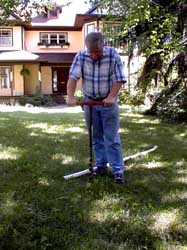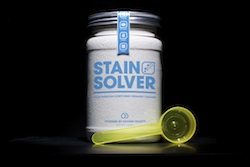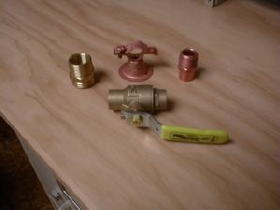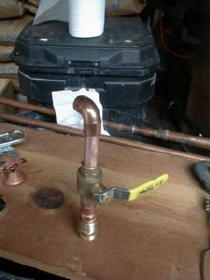Corrugated Stainless Steel Tubing (CSST)
Install gas lines like electric wires? You must be nuts! If you would have made that statement 20 years ago, I would have thought you were nuts. After all, natural gas was meant to pass through rigid iron pipe, copper tubing, or steel mains, right? Well, that is the way it was done for years until someone got tired of threading pipe or forgetting to install the flare nut before you flare the pipe!
A Revolution
If you have ever installed black iron gas line on a hot or cold day, you know what an effort it can be. Threading pipe by hand will build biceps! The cutting oil gets everywhere and it is simply hard work. Working with copper tubing is easier, but even soft copper can be tough to bend without crimping the tubing. The new corrugated stainless steel tubing (CSST) is easy to cut, bends readily and requires no threading. Different systems require different fittings, but most are simple to work with. CSST is a revolutionary product and will be widely recognized as such within a matter of years.
Different Systems
Not all CSST is the same. It looks the same, even upon close inspection, but it is not. The difference is in the brass connections at each end of a tubing run. Some of the fittings have more parts than others. I happen to prefer the fittings that do not have split rings within them. Fewer parts, in my opinion, mean fewer problems.
Working With Black Iron
I love to install black iron pipe. So does my best friend, Richard Anderson - Cincinnati, Ohio's best HVAC man. The work is challenging and when you run several hundred feet of pipe with countless fittings and pass the pressure test, the satisfaction is enormous.
You need special tools to work with black iron pipe:
- A pipe vise or tripod to hold the pipe
- A heavy duty cutter to slice the pipe
- A rachet and assorted pipe threading dies
- A reamer and cutting oil
You can rent all of the above tools for a small job. If you plan to buy your own tools, be prepared! You will easily spend hundreds of dollars.
One of the biggest problems rookies make with black iron is getting the right length for a particular piece of pipe. You must always keep in mind that a certain amount of pipe disappears into each fitting. Usually 3/8 to 1/2 inch of pipe threads into a fitting.
You don't want to over-tighten black iron pipe. 1.5 to 2 complete turns of the pipe, after it is hand tight, is usually sufficient to produce leak free joints.
Pipe Dope
Black iron pipe joints need to have a sealing compound applied to the threads to make them leak free. I have never liked using Teflon tape - an approved sealer. I prefer using a pastelike substance called pipe dope. Traditionally, this material was messy to work with. However, a new pipe dope hit the market about 18 months ago that is easy to clean from your hands and any other surface it touches.
You apply pipe dope to oil free, or nearly oil free, male pipe threads. Don't put it inside a female fitting.
Threading Pipe
Pipe thread dies cut amazingly crisp threads on bare black iron pipe. As you might imagine, this creates enormous friction. You must use a special thread cutting oil to lubricate the die as it rotates around the black iron pipe. Failure to do this will cost you big bucks. Without oil, your cutting die will overheat and burn up. Capture the oil in a basket, strain it and reuse it!
Author's Notes:
On November 8, 2005, I received the following email.
In regard to your article on the CSST systems being installed in new homes. If you care to, read an article that was published in April of 2003 in the Dallas News regarding banning this installation in the city of Frisco, Collin County, Texas. Lightning strikes have caused numerous fires in residential homes as a result of CSST failing. Although the manufacturer states that it is completely safe, in fact safer than ridged black pipe, it has some serious issues. I have seen three fires in our own community as a result of CSST failure. The manufacturer accepts no responsibility for improper installation, and does not provide in any great detail, of detrimental or catastrophic failure if done so. I just saw your article and thought I would provide feedback. If you have questions on the article I mentioned, you may contact the Dallas News. Thank you for your time.
Maxwell J. Brunner
Lieutenant
Menomonee Falls Fire Department
Email- [email protected]
I responded to this very interesting email with a few thoughts of my own. My first suspicion would be that the tubing acts like a lightning rod of sorts. The thin walls of CSST might not seem to handle as much of a strike as black iron. Black iron is so much thicker that it may actually take a lightning strike better.
I suggest you look up the article in the Dallas News if you want more details.
February 2007
We received a notification from Jack Tracy of Houston, TX, about the ban having been lifted. Read about it in the Dallas News Archives - Publish Date: July 16, 2003.
We have only read the title and summary and have not purchased the article from the Dallas News.
Column B296



